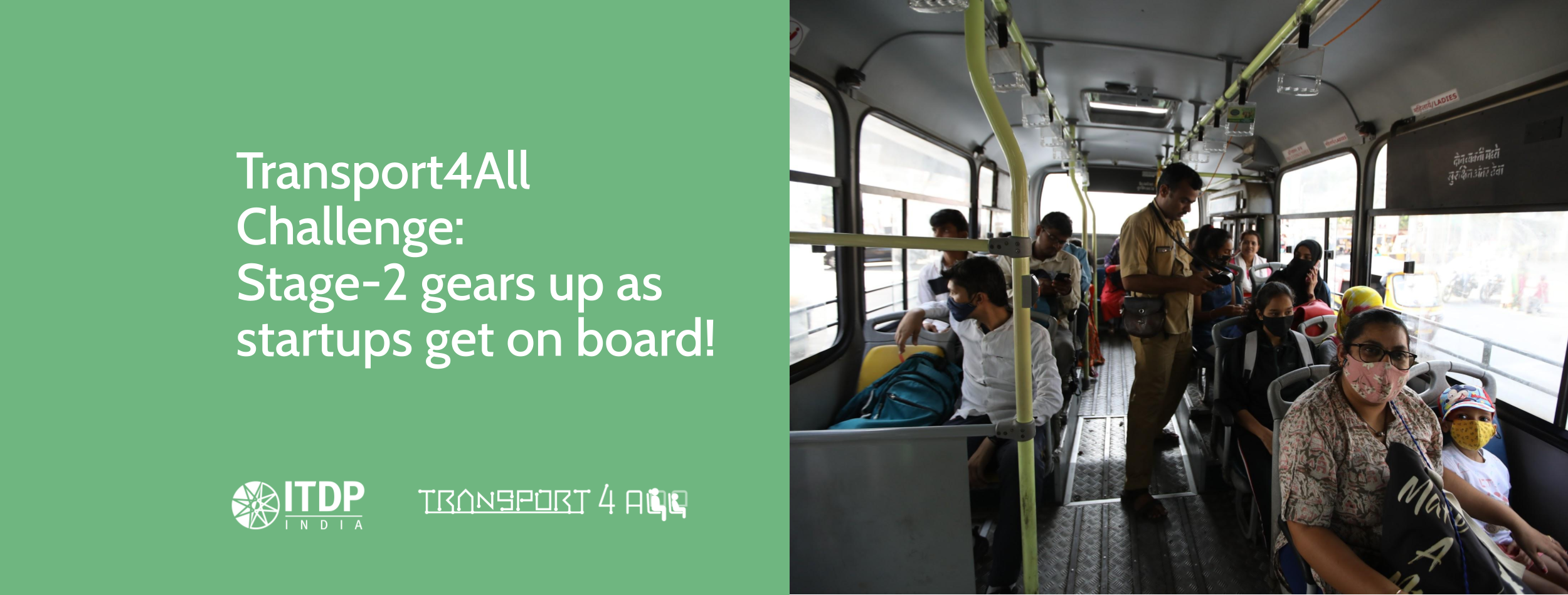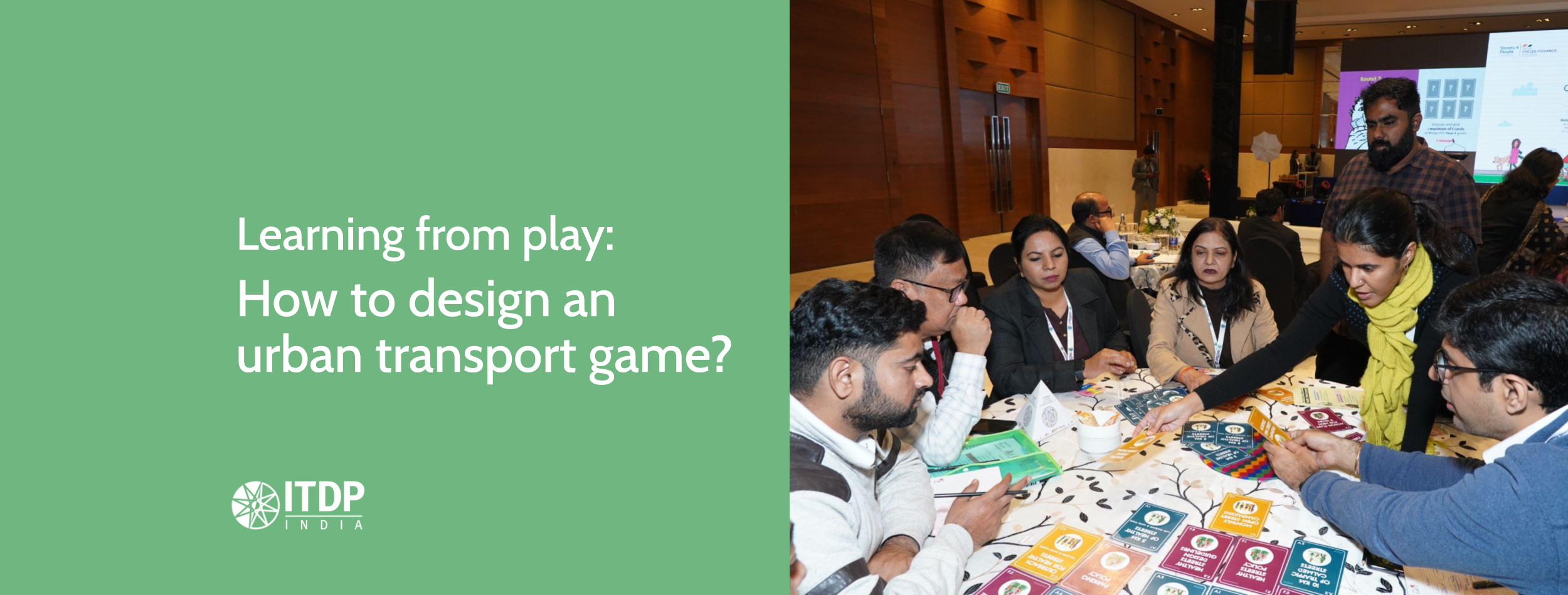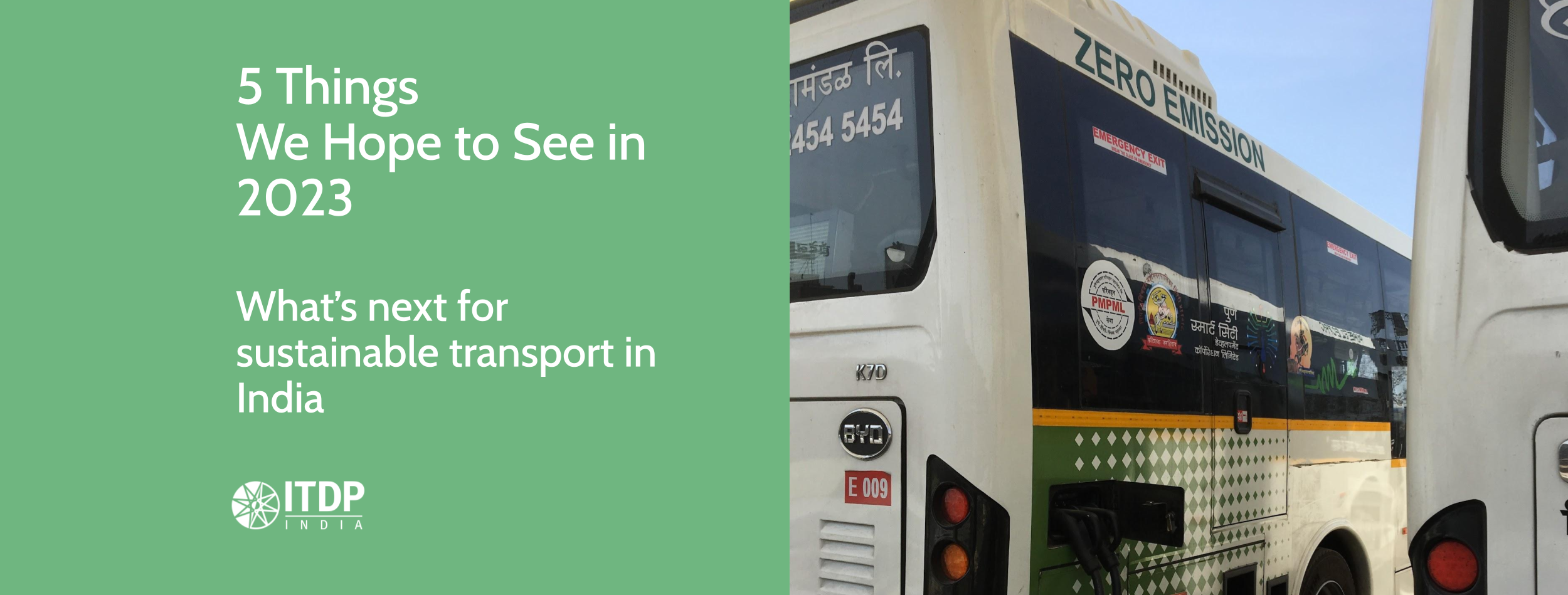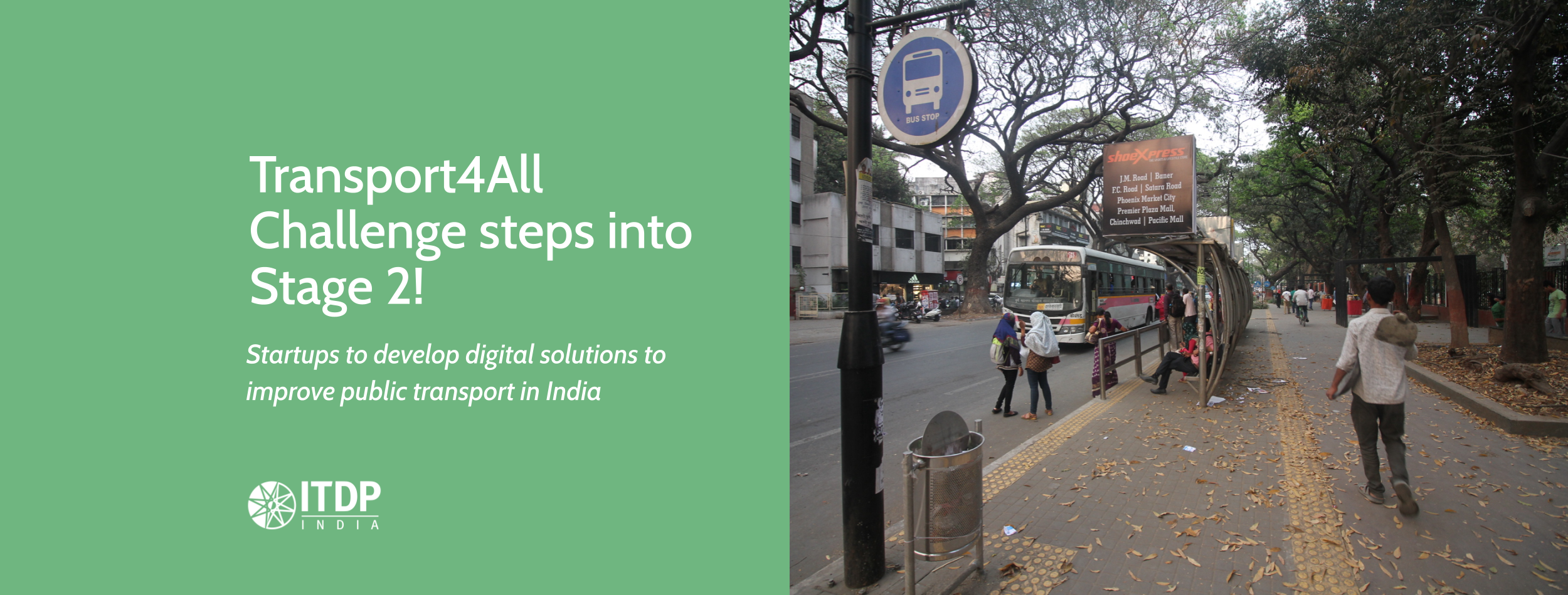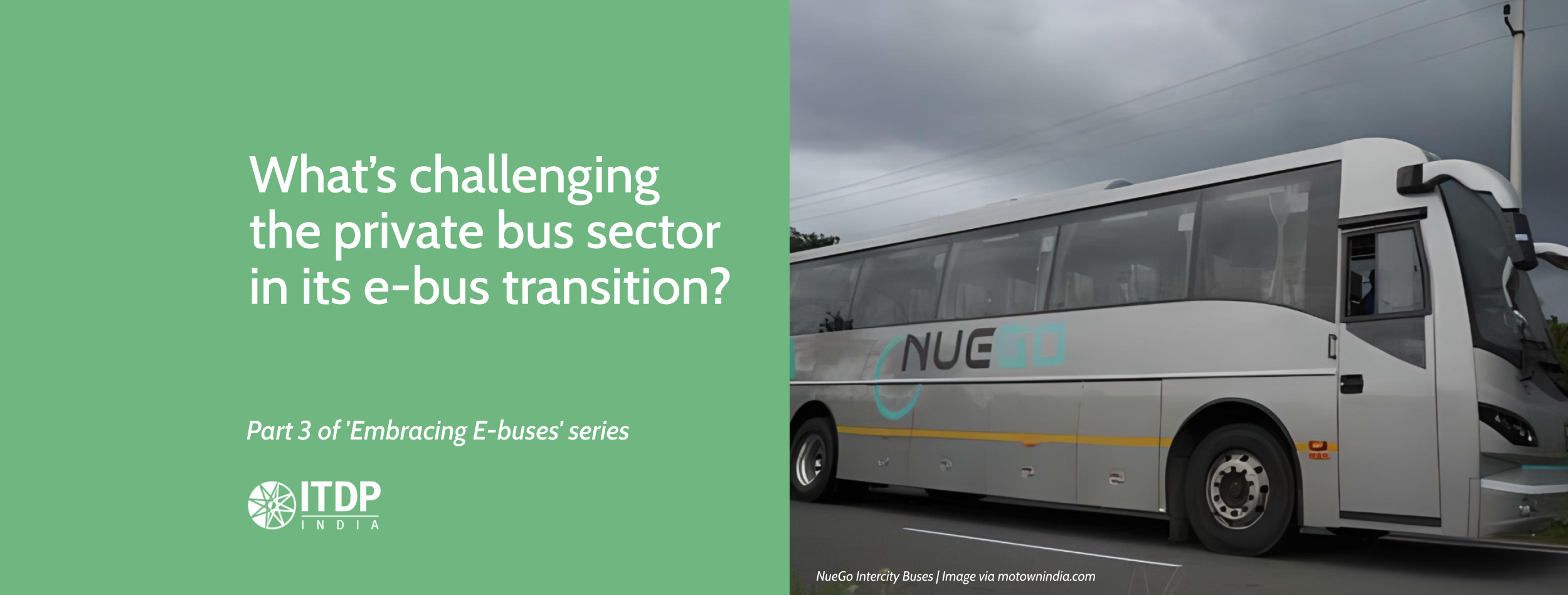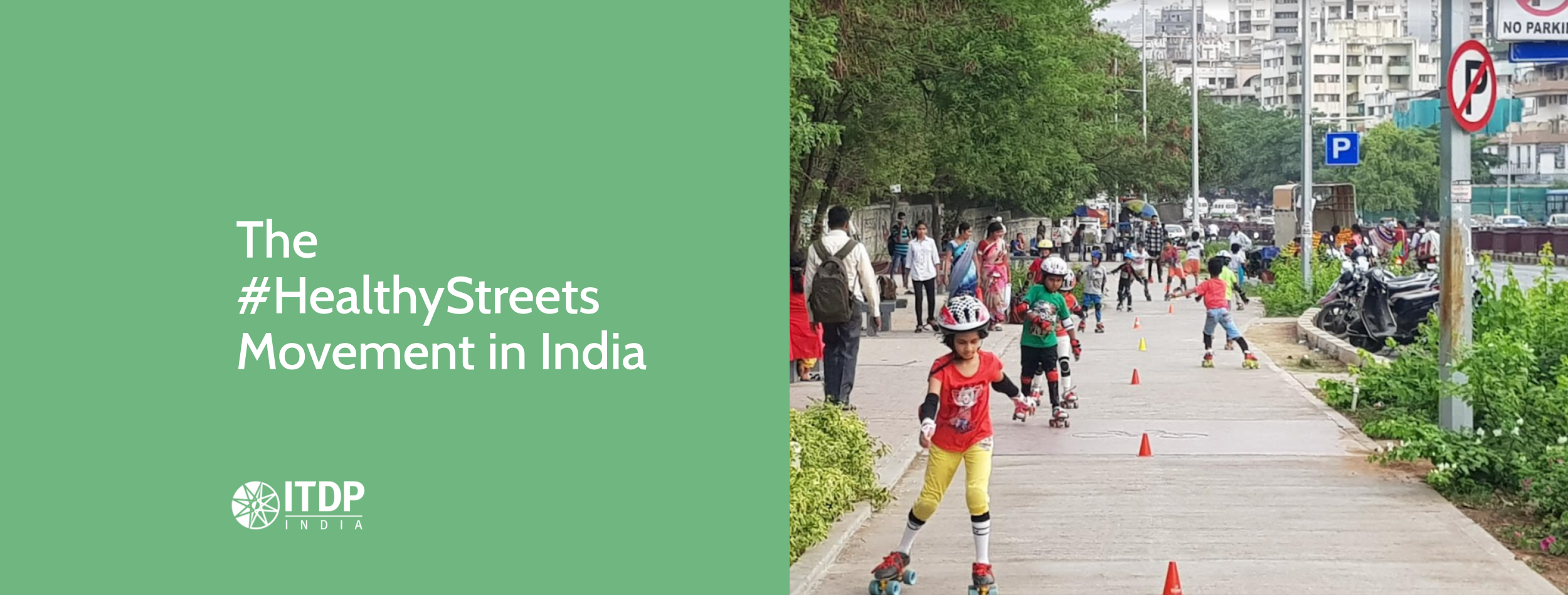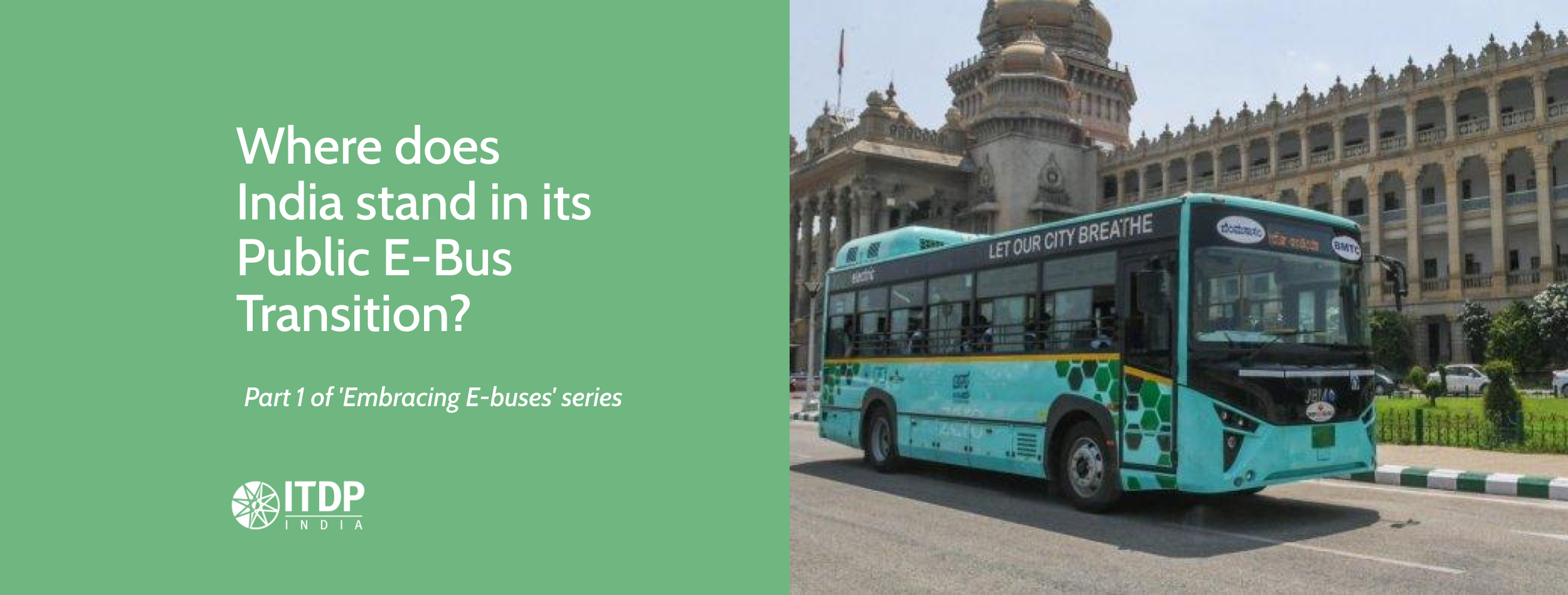In an effort to improve public transport ridership in India, the Ministry of Housing and Urban Affairs, along with the Smart Cities mission, launched the #Transport 4All🚍Challenge in April 2021, envisioned as a three-stage campaign.
In successful stage 1, which saw 46 cities conduct the country’s largest public transport data exercise with surveys with more than 2 lakh citizens, 15,000 bus drivers and conductors, and 22,000 informal public transportdrivers. These cities—who qualify for Stage 2 of the Challenge—used the surveys findings to develop more than 165 problem statements, that is now curated into a final list of 8 problem statements by the Challenge team.
The Challenge recently stepped into Stage 2—the Solution Generation stage—and the cities will work with shortlisted startups across the country; city governments will work towards innovative and impactful digital solutions to revolutionise public transportation and enhance the overall mobility experience for their citizens. These solutions would be geared at the eight problem statements identified through the stage 1 surveys.
A nationwide call for startups was announced to realise this, inviting applications to address the solutions for eight problem statements.
Shortlisting Startups
A team of experts shortlisted 70 startup applications from over 160 applications received for the Challenge from startups across the country based on three verticals: a) Relevance b) Solution Maturity c) Team Capability.
Find the list of 70 Shortlisted Startups Applications that will develop the solutions at this blog’s end.
Way Forward
Following this, in Stage-3, the winning startups will receive an award of up to ₹20 lakhs per solution and be eligible to pilot their digital solutions with the cities. The winning solutions are envisaged to be innovative, context-specific and profoundly transformative for the public transport system. We congratulate all the shortlisted startups and look forward to seeing their ideas improve the efficiency, convenience, and comfort of informal and formal public transport across Indian cities. .
We want to acknowledge the leadership of the Ministry of Housing and Affairs Smart Cities Mission and Urban Transport and the Association for State Road Transport Undertakings (ASRTU)—hosts for the Transport4All Digital Innovation Challenge. We thank our knowledge partner, the World Bank, for bringing their global technical expertise to digital innovation and guiding startups and cities. We also thank the technology platform partners—Cix and Startup India—for engaging with startups and providing a platform for cities and startups to collaborate efficiently.
As Co-host and Coordinator for the Challenge, ITDP India provides technical and communication expertise to cities, facilitates capacity-building workshops and one-on-one sessions, and sets up peer-learning platforms so cities can learn from one another.
| S. No. | Application Number | Applicant Profile Name | Problem Statement Title |
| 1 | Tc00088 | Amiraj Wahan Private Limited | 1. Route Rationalization |
| 2 | Tc00166 | Arms 4 Ai Private Limited | 1. Route Rationalization |
| 3 | Tc00105 | Auklr Technologies Private Limited | 1. Route Rationalization |
| 4 | Tc00044 | Flyby Business Solutions Private Limited | 1. Route Rationalization |
| 5 | Tc00014 | Redmond Techno Service (Opc) Private Limited | 1. Route Rationalization |
| 6 | Tc00130 | Salasar Ecommerce Total Solutions Private Limited | 1. Route Rationalization |
| 7 | Tc00090 | Amiraj Wahan Private Limited | 2. Network Digitisation |
| 8 | Tc00038 | Anamar Technologies Private Limited | 2. Network Digitisation |
| 9 | Tc00049 | Flyby Business Solutions Private Limited | 2. Network Digitisation |
| 10 | Tc00150 | Giskernel Technologies Llp | 2. Network Digitisation |
| 11 | Tc00022 | Kicktrans Technologies Private Limited | 2. Network Digitisation |
| 12 | Tc00027 | Redmond Techno Service (Opc) Private Limited | 2. Network Digitisation |
| 13 | Tc00072 | V Robotics Passenger Information Systems Private Limited | 2. Network Digitisation |
| 14 | Tc00179 | Yatri Buddy | 2. Network Digitisation |
| 15 | Tc00195 | Digiit Business Services Private Limited | 3. Bus & Staff Scheduling |
| 16 | Tc00188 | Innoctive Technologies Private Limited | 3. Bus & Staff Scheduling |
| 17 | Tc00128 | Salasar Ecommerce Total Solutions Private Limited | 3. Bus & Staff Scheduling |
| 18 | Tc00156 | V Robotics Passenger Information Systems Private Limited | 3. Bus & Staff Scheduling |
| 19 | Tc00183 | Yatri Buddy | 3. Bus & Staff Scheduling |
| 20 | Tc00192 | Aiq Connect Private Limited | 4. Transit Performance Monitoring |
| 21 | Tc00051 | Flyby Business Solutions Private Limited | 4. Transit Performance Monitoring |
| 22 | Tc00046 | Greatpelican Digital Systems Private Limited | 4. Transit Performance Monitoring |
| 23 | Tc00110 | Ravi Kumar | 4. Transit Performance Monitoring |
| 24 | Tc00119 | Ravity | 4. Transit Performance Monitoring |
| 25 | Tc00029 | Redmond Techno Service (Opc) Private Limited | 4. Transit Performance Monitoring |
| 26 | Tc00164 | Ushva Clean Technology Private Limited | 4. Transit Performance Monitoring |
| 27 | Tc00180 | Vrishchik Technologies Llp | 4. Transit Performance Monitoring |
| 28 | Tc00191 | Yatri Buddy | 4. Transit Performance Monitoring |
| 29 | Tc00017 | Aloha Tech Ventures Private Limited | 5. Passenger Information & Ticketing |
| 30 | Tc00093 | Amiraj Wahan Private Limited | 5. Passenger Information & Ticketing |
| 31 | Tc00039 | Anamar Technologies Private Limited | 5. Passenger Information & Ticketing |
| 32 | Tc00003 | Appentus Technologies Private Limited | 5. Passenger Information & Ticketing |
| 33 | Tc00136 | Bhuvaneshwari K | 5. Passenger Information & Ticketing |
| 34 | Tc00194 | Digiit Business Services Private Limited | 5. Passenger Information & Ticketing |
| 35 | Tc00041 | Hw Design Labs Private Limited | 5. Passenger Information & Ticketing |
| 36 | Tc00034 | Joyride | 5. Passenger Information & Ticketing |
| 37 | Tc00007 | Mots (Metro Online Transit System) Private Limited | 5. Passenger Information & Ticketing |
| 38 | Tc00144 | Opulance Technologies Private Limited | 5. Passenger Information & Ticketing |
| 39 | Tc00135 | Prectech | 5. Passenger Information & Ticketing |
| 40 | Tc00139 | Purelectron Innovation India (Opc) Private Limited | 5. Passenger Information & Ticketing |
| 41 | Tc00030 | Redmond Techno Service (Opc) Private Limited | 5. Passenger Information & Ticketing |
| 42 | Tc00134 | Salasar Ecommerce Total Solutions Private Limited | 5. Passenger Information & Ticketing |
| 43 | Tc00151 | Splenor Computers Private Limited | 5. Passenger Information & Ticketing |
| 44 | Tc00056 | Teer Mobility Solutions Private Limited | 5. Passenger Information & Ticketing |
| 45 | Tc00152 | Thinkseed Systems Pvt Ltd | 5. Passenger Information & Ticketing |
| 46 | Tc00023 | V Robotics Passenger Information Systems Private Limited | 5. Passenger Information & Ticketing |
| 47 | Tc00169 | Yatri Buddy | 5. Passenger Information & Ticketing |
| 48 | Tc00026 | Aloha Tech Ventures Private Limited | 6. Grievance Redressal |
| 49 | Tc00196 | Digiit Business Services Private Limited | 6. Grievance Redressal |
| 50 | Tc00055 | Flyby Business Solutions Private Limited | 6. Grievance Redressal |
| 51 | Tc00098 | Amiraj Wahan Private Limited | 7. Bus Maintenance Scheduling |
| 52 | Tc00103 | Qed Analyticals Limited Liability Partnership | 7. Bus Maintenance Scheduling |
| 53 | Tc00100 | Ravity | 7. Bus Maintenance Scheduling |
| 54 | Tc00129 | Salasar Ecommerce Total Solutions Private Limited | 7. Bus Maintenance Scheduling |
| 55 | Tc00061 | V Robotics Passenger Information Systems Private Limited | 7. Bus Maintenance Scheduling |
| 56 | Tc00153 | Vrishchik Technologies Llp | 7. Bus Maintenance Scheduling |
| 57 | Tc00074 | Agnibhu Technologies Private Limited | 8. Ipt Aggregator |
| 58 | Tc00002 | Chalbo India Private Limited | 8. Ipt Aggregator |
| 59 | Tc00048 | Flyby Business Solutions Private Limited | 8. Ipt Aggregator |
| 60 | Tc00076 | Jm Fleet Operations Private Limited | 8. Ipt Aggregator |
| 61 | Tc00040 | Kevolution Technologies Private Limited | 8. Ipt Aggregator |
| 62 | Tc00024 | Meiro Mobility | 8. Ipt Aggregator |
| 63 | Tc00133 | My Taxi India Private Limited | 8. Ipt Aggregator |
| 64 | Tc00047 | Onedi Smart Mobility Private Limited | 8. Ipt Aggregator |
| 65 | Tc00165 | Palmgini Softwares Private Limited | 8. Ipt Aggregator |
| 66 | Tc00057 | Paripalana Associates Private Limited | 8. Ipt Aggregator |
| 67 | Tc00137 | Pulpit Mobility Private Limited | 8. Ipt Aggregator |
| 68 | Tc00059 | Thinkcrazy Technologies Private Limited | 8. Ipt Aggregator |
| 69 | Tc00125 | Wizzride Technologies Private Limited | 8. Ipt Aggregator |
| 70 | Tc00159 | Yatri Buddy | 8. Ipt Aggregator |
Background
With a decline in public transport ridership in Indian cities, we need to invest in public transport as a social good, completely revamp informal transit services, and prioritise digital innovation to improve user experience. The Transport4All Challenge aims to bring together cities, citizen groups, and startups to develop solutions that improve public transport to better serve the needs of all citizens.
At the core of the Challenge are citizens who will not only define the problems for which solutions shall be created but also help startups and cities to refine the solutions to meet their needs. The first edition of the Challenge focuses on digital innovation. Cities and startups will receive guidance to develop and test various solutions, learn from them, and scale them to build people’s trust in public transport and enhance mobility. The solutions will make public transport—formal and informal— safe, convenient, and affordable for all. All the Smart Cities Mission cities, capitals of states and union territories (UTs), and all cities with a population of over five lakhs—are eligible for the Challenge.
Three Stages of the Challenge
The Transport4All through Digital Innovation Challenge comprises three stages:
- Stage I PROBLEM IDENTIFICATION: Cities, with the support of NGOs, identify key recurring problems that citizens and public transport operators face
- Stage II SOLUTION GENERATION: Startups develop prototypes of solutions to improve public transport with inputs from cities and NGOs
- Stage III PILOT TESTING: Cities engage startups for large-scale pilots and refine the solutions based on citizen feedback




